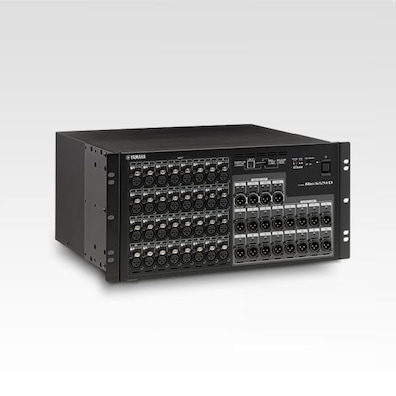Yamaha CL System Adds Value To Muziekgebouw aan’t IJ

Photo credit Erik van Gurp
Opened in 2005, Amsterdam’s Muziekgebouw aan’t IJ is the Netherlands foremost venue for contemporary classical music. For the past nine years, the audio mixing requirements have been reliably taken care of by a Yamaha DM2000, but a recent technical refurbishment has seen it joined by a CL3 system.

Physically, Muziekgebouw aan’t IJ’s main auditorium, the Grote Zaal, is exceptionally flexible, featuring a ceiling, walls, floor and seating which are all moveable. These features make it an equally space for everything from intimate chamber music to full orchestras.
Acoustically the auditorium is extremely quiet so, when funding became available to upgrade the audio system, the venue’s technical team needed a mixing system that was virtually silent in operation, as well as fulfilling all the technical requirements.
“At the beginning, we wrote down a list of what we needed from a new mixing console. The number of faders, amount and quality of DSP, ease of use and acceptance within the industry were some of the more important ones,” says Tijl Schroevers, deputy head of the technical department at Muziekgebouw aan’t IJ.
“A special requirement was the amount of fan noise generated by the console, because Muziekgebouw is one of the quietest concert halls in Europe. We stage a lot of modern music which needs a huge amount of acoustic headroom, so we can’t have devices that produce noise. Having had a DM2000 for nine years, we were used to that not being a problem.”
Audio suppliers ISO Audio and AudioPro were consulted and a four-way ‘shootout’ between consoles from four manufacturers was arranged. Muziekgebouw aan’t IJ’s technicians all agreed that the Yamaha CL system was the clear winner.
Supplied by ISO Audio, a system comprising a CL3 console, a Rio3224-D and Rio1608-D i/o units was chosen. Three MY16AUD interface cards were also purchased, which have allowed the hall’s existing DM2000 to be an integral part of the new system.
“Yamaha consoles are used worldwide, so any guest technician knows and accepts the CL without any problem,” says Tijl. “The aesthetic character of the console was also very important. The user interfaces on some other consoles are solely designed for live use, with a lot of bright illumination. This can be optically very distracting in an environment like Muziekgebouw.
“Another advantage for us was that, by adding the Dante interface cards, the DM2000 could continue in use, now as a monitor console. It still works perfectly and so using the Dante cards made for a really cost efficient system. Dante makes our system future proof, but it has also given a new lease of life to products we already had.”
The technical team has set up the CL3 with a couple of standard configurations, which can be recalled for quick initialisation and use of the system. From these, each technician has made their own tweaks, saved to USB memory sticks for instant recall. For guest technicians, a scene has been created with all the settings they might need.

“Although we didn’t initially think we’d use the CL StageMix app, it has turned out to be a fantastic tool. The console has been connected to our internal WiFi system, which has a fantastic coverage, and we use StageMix a lot,” says Tijl.
“We use it for monitors, as well as for doing fine tuning of the house system. It’s really helpful to be stood by artists to communicate with them, not having to shout down the hall!
“We have had good reactions from all the technicians who have used the system about its sound quality. We are also looking forward to the CL Version 3 software, which will give us Dan Dugan automixing within the console. We have rented Dugan hardware before, when we had an important conference, so having it included in the system will be a fantastic feature.
Related Products
Location
Amsterdam


